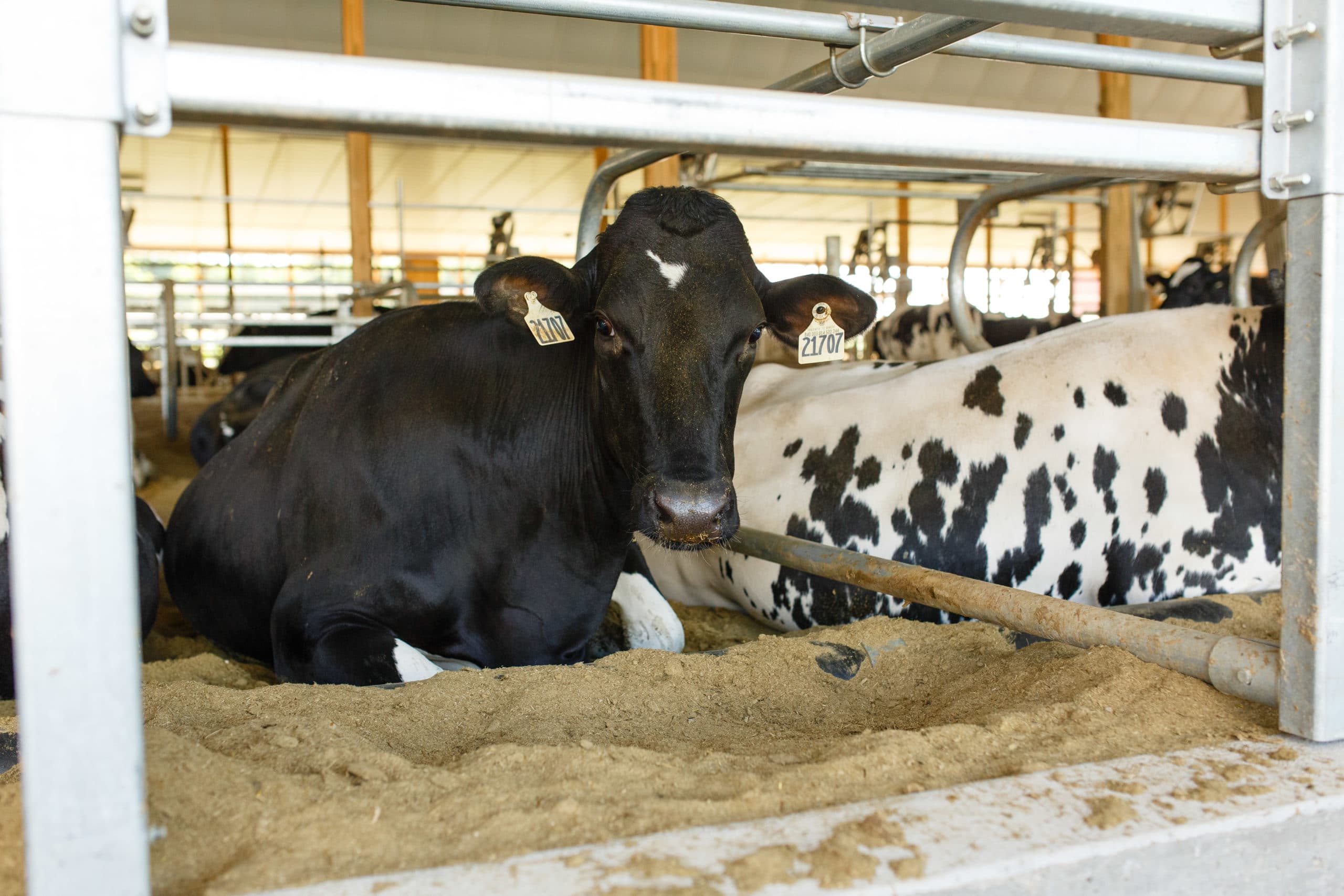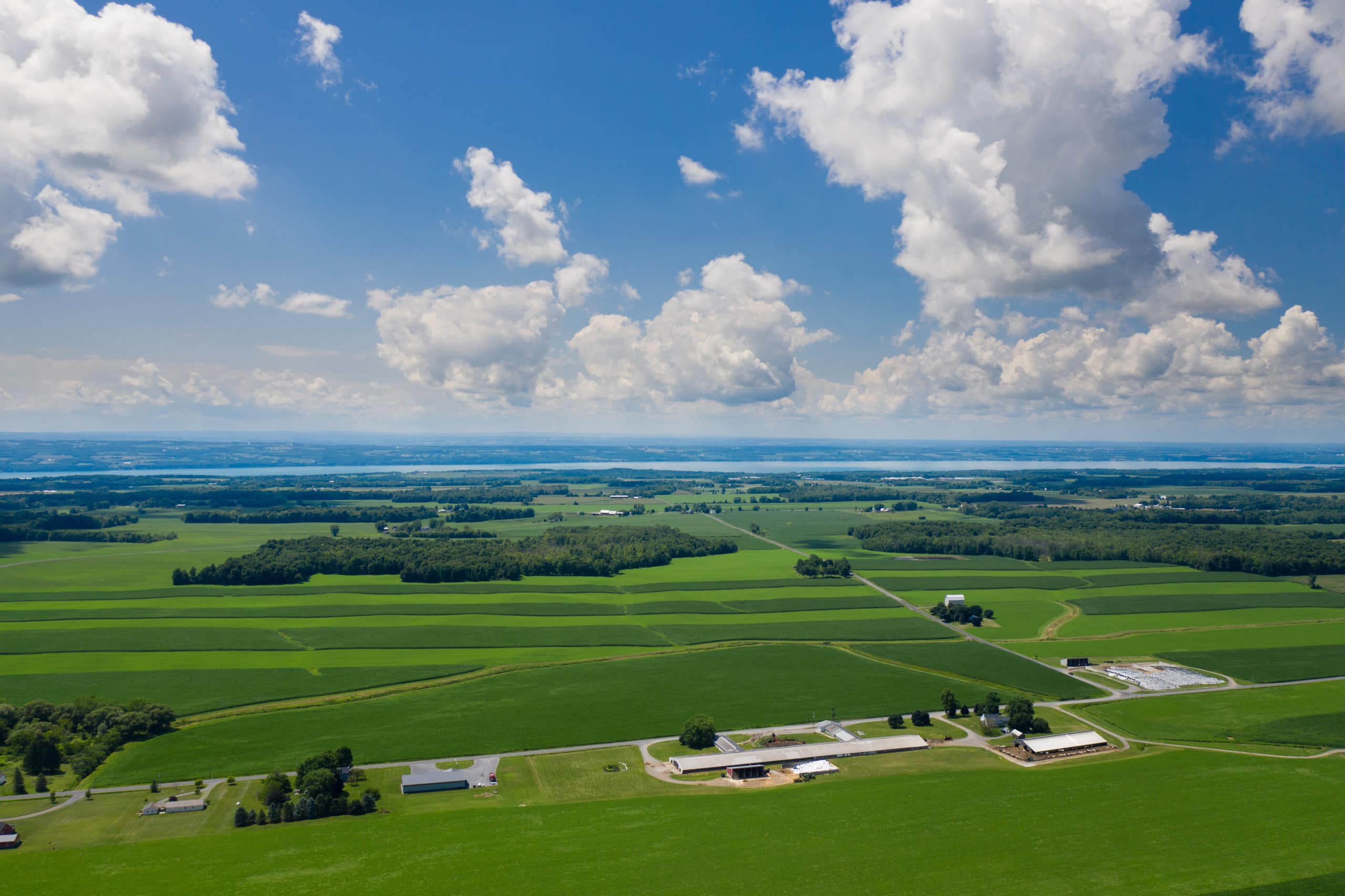Poo Paper
The handout Local Dairy Farmers’ Story on Sustainability in your mailing is printed on POOPOOPAPER™. Created from tree-free natural and sustainable resources, this paper serves as a reminder of the many ways dairy farmers recycle different things—like cow manure! New York’s El-Vi Farms, for example, separates manure into solid and liquid components (pictured below). The pathogen-free fibers can be reused for cow bedding and the liquid portion used as crop fertilizer.

Wildflower Paper
The cover letter for this mailing is printed on paper embedded with wildflower seeds. Wildflowers are important to pollinators like bees and butterflies. Did you know that flowers are also grown on many dairy farms? For example, Pennsylvania’s Red Sunset Farm grows sunflowers on fields at certain times of the year. The sunflowers serve several important functions: they benefit pollinators and other wildlife, hold soil in place (preventing erosion and nutrient loss from the fields)…and they look great!
Watch this video about the beehives at Red Sunset Farm:
CowPots
Dairy farmers are extreme recyclers. They often recycle water, cow bedding materials, and even cow manure! To dairy farmers, cow manure isn’t a waste product; it’s a valuable resource that can be used to fertilize fields and grow crops to feed to their cows. Freund’s Farm in Connecticut takes recycling one step further: they manufacture biodegradable potting plants from composted cow manure! These CowPots supply valuable nutrients for use in your garden–replacing non-renewable planting containers like plastic and peat.
Candle/Grass

Learn more about cover crops. Check out this video about Worth-the-Wait Farms:
Sustainable Flatware
When eating your next meal with this sustainable flatware, consider this: The U.S. Environmental Protection Agency estimates that food waste comprises 22 percent of what’s in our landfills. When landfilled, food waste is converted to methane–a potent greenhouse gas that contributes to climate change. Farms like Barbland Dairy in New York provide a great community service—they accept food waste from local grocery stores and feed it to their cows. Not only does this recycling of food waste help the planet, but it also leads to the production of nutritious milk!
Another New York farm—Noblehurst Farms—has an anaerobic digester that produces clean, renewable energy from cow manure and food waste collected from local grocery stores, restaurants, consumer food companies, and even the New York State Fair! In addition, nutrients from the manure and food waste are recycled as fertilizer for crops.
Watch a video about Noblehurst Farms:
Reusable Water Container
Water is a vital resource—to you and dairy farmers. That’s why it is conserved and recycled. Some dairy farmers, for example, use a device called a plate cooler to cool the milk as it comes from a cow. Cold water passes right from the well through the plate cooler and absorbs heat from the warm milk. Farmers then reuse this water in different ways: as drinking water for cows (who prefer warm water); to cool the cows with a fine spray during warm weather; to wash farm equipment; and clean the barn floor. After cleaning the barns, the nutrient-rich water can be collected and stored, then used to fertilize nearby fields—like these at Sunnyside Farms in New York—and grow crops that are fed to the cows.
Thanks to recycling practices and other innovations by the U.S. dairy industry, the amount of water needed to produce a gallon of milk declined 30 percent between 2007 and 2017.

Plant a Tree
In honor of you, our health professional colleagues, we are working with two environmental groups—Genesee RiverWatch and Alliance for the Chesapeake Bay—to plant trees on dairy farms in New York and Pennsylvania. Trees and other vegetation planted along streams and waterways—known as riparian buffers—serve several purposes. They help stabilize streambanks and prevent erosion. Trees also take up carbon from the atmosphere and filter pollutants from stormwater runoff. A healthy stream is full of fish, bugs and other wildlife, which rely on cooler water to thrive. Finally, trees help to reduce the water temperature by offering shade.


